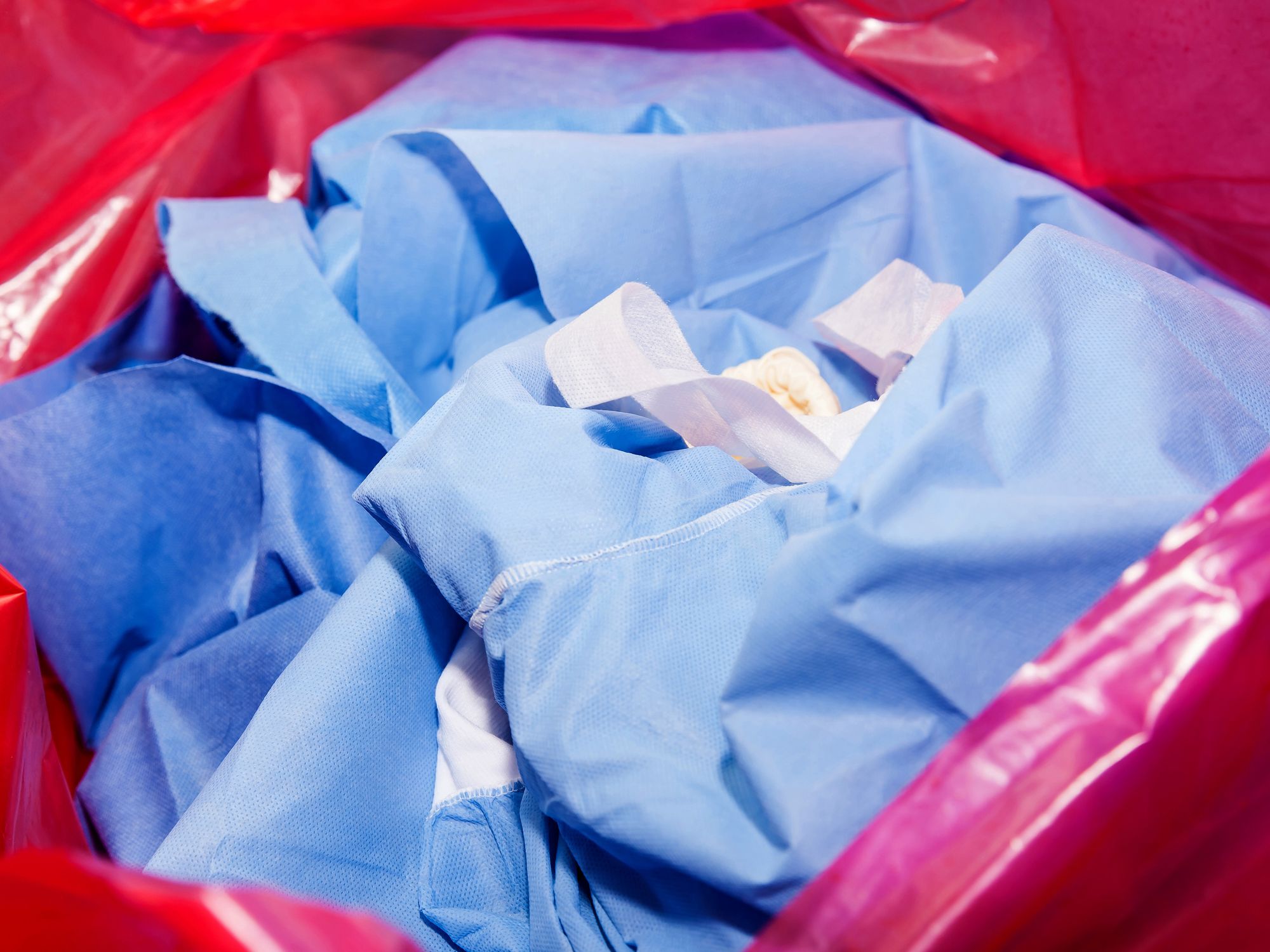Contaminated laundry practices

- Laundry that’s soiled with blood or OPIM or may contain sharps should be handled as little as possible, promptly bagged, and clearly labeled.
- Employees can’t wash contaminated laundry at home, but laundry can be part of their job duties at work if appropriate safety measures are taken.
Contaminated laundry is laundry that is soiled with blood or other potentially infectious materials (OPIM) or may contain contaminated sharps.
Handling contaminated laundry
Laundry that has been contaminated with blood or OPIM should be handled as little as possible with a minimum of agitation. Employees who handle these materials must wear protective gloves and other appropriate personal protective equipment (PPE).
Employees should bag or containerize contaminated laundry as soon as possible at the location it was used. They shouldn’t sort or rinse the laundry first.
If the contaminated laundry is wet and seems reasonably likely to soak through or leak, the material for the bags or containers used in laundry collection must prevent fluids from reaching the outside of the bags or containers.
Laundry should only be sorted in a designated laundry area, not at the location of use.
Contaminated laundry must be easily identifiable. The employer has two choices:
- Laundry bags or containers can be identified according to the requirements of 1910.1030(g)(1)(i) — either given fluorescent orange or orange-red labels with the biohazard symbol, or color-coded red.
- When universal precautions are used for all soiled laundry (considering all laundry to be contaminated), the employer may use an alternative color or label for the bags/containers, as long as all employees are trained to recognize them as containing soiled laundry that requires the use of universal precautions.
Washing contaminated laundry
The Occupational Safety and Health Administration (OSHA) regulations stop short of giving instructions for actually cleaning and disinfecting contaminated laundry. Instead, an OSHA directive and interpretation say that clothing manufacturer’s instructions should be met, and Centers for Disease Control and Prevention (CDC) guidelines are available. The CDC guidelines offer two choices:
- Use detergent in water above 160°F for a cycle greater than 25 minutes, and
- Use a “suitable chemical” and concentration if the water is below 160°F.
Who can wash contaminated laundry?
Employees aren’t allowed to take laundry home, both because the employer cannot ensure proper handling or laundering procedures and because contamination could migrate to the homes of employees.
It is the employer’s responsibility to launder, repair, replace, and dispose of contaminated PPE.
If uniforms are intended to protect workers from blood or OPIM (or if uniforms are contaminated), then the employer is responsible for laundering them.
Employers can have employees wash contaminated laundry onsite as long as proper safety procedures such as providing PPE are followed. Laundry can also be contracted out.
When a facility that uses universal precautions in handling laundry ships it out to a second facility that does not, the first facility must place the laundry in bags or containers labeled or color-coded in accordance with 1910.1030(g)(1)(i) so that workers at the second facility can easily identify contaminated laundry.
